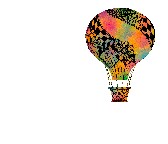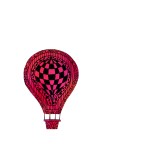Basic Techniques...
|
 |
Wood Preparation when Staining Do not apply any kind of sealer when you are staining, sealers will repel the stain. Sand entire piece using (250-300 grit) sandpaper, with tack cloth to remove dust. Apply even coat of Stain to entire piece using a soft clothe or large brush. Sand again, wipe dust. |
Metal
Wash piece with warm soapy water and rinse thoroughly. Then rinse
with mix of 2 Tblsp. vinegar plus 1 cup of water. When you wash
a piece of metal, water becomes trapped in welded seams. Allow
it to dry for three days. Apply Metal Primer using 1” wash brush.
Applying Metal Primer to soon traps moisture, causing metal to
rust from inside out.
Old Metal
For old pieces if you don’t want rust sand any small rusted areas
or use a product such as naval jelly available hardware store.
Then follow steps for new metal.
Glass
Wash with warm soapy water. Allow to dry. Using 1” wash brush apply
very liberal coat of Surface Conditioner. Never forget PermEnamel
Surface Conditioner this creates the bond between glass and color.
Surface Conditioner will leave a milky look on the glass when it
has all evaporated. When milky look appears it is ready to paint
on. A thin coat must be reapplied every 4 hours; you may go right
over painted areas.
Fabric
Wash with warm soapy water and dry. Do not use dryer sheets or softeners
as these will repel the paint.
Candle Painting
On candles is a residue that is a mold release agent used when
pouring the hot wax. You must remove this first. Wipe with alcohol
or buff with paper towel until the sheen is gone.
Always mix your color with an equal amount of Candle and Soap Painting
Medium. This forms bond with candle. When you are finished apply
one to two coats of Candle and Soap Painting Medium to the entire
candle. This brings back original sheen and helps protect painting.
To Finish
 |
Wood, Metal and Paper Mache Pieces Apply a nice even coat of Delta’s Varnish of choice using 1” wash brush. Sand very lightly with 450-grit dry/wet sandpaper between each coat of varnish. May be repeated as many times as desired. |
Glass Pieces
Apply as many coats of Gloss Glaze as desired. This is not a required
coating but gives your glass a nice look almost as if it has been
fired. For clear glass, glaze only the painted areas.
Techniques
Transferring Pattern
Lay tracing paper over pattern. Trace all lines. Lay tracing on surface, tape top and one side. Slide graphite paper between tracing and surface, draw over all lines. There are small short lines used to denote shading these do not need to be traced.
Stamping
Pick up small amount of color using stencil brush or wedge sponge,
pat excess color off on palette. Pat color on image of stamp using
gentle straight up and down motion. Do not apply color to heavily
or it will fill in fine cuts of stamp. Press stamp firmly on surface
lifting straight off. Rocking or sliding stamp will cause blurred
images.
Crackle
There are three layers to crackling, basecoat, Crackle and topcoat.
There are three rules of thumb (a) crackle should be tacky when
topcoat is applied. If your fingerprint holds in crackle, then
it is just right for applying topcoat (approximately 15 min. depending
on temp. and humidity). (b) The direction you apply topcoat is
direction that cracks will follow. (c) The heavier you apply topcoat
over crackle medium the larger the cracks will be.
Stenciling
Apply spray adhesive to Stencil; allow to dry, pat off excess spray
with paper towel. Press stencil firmly in place. Using wedge sponge,
pick up small amount of color, pat on palette to remove excess
paint. Using straight up and down motion pat over open areas of
stencil. Applying two thin coats is preferable. Applying to heavily
will cause color to bleed under edge of stencil.
Tearing Paper
To tear edges of paper, with small brush run a water-line where you
want to tear, this will make tearing easier. Tear paper towards
yourself to leave contrasting edge, away from yourself to leave
no color variation.
Working With PermEnamel
Do not apply PermEnamel products within 3/4” of any area that may
come in contact with food.
Be sure to allow a little extra drying time between coats with PermEnamel.
It may feel dry to touch but has not bonded with glass yet. If you
don’t allow first coat enough time to bond, color will slip and slide
making mess.
Because glass is non-porous it will take more coats for opaque coverage.
PermEnamel will air-dry to touch in a few minutes. When air-dried
for 10 days PermEnamel is cured and is dishwasher, microwave, and
oven (3 up to 350 degrees) safe.
Do not use water with PermEnamel it is the enemy. Water will break
down the properties of the paint. Only use water for cleanup. When
floating use either Thinner or Retarder. My personal favorite is
a mix of 3 parts Gloss Glaze to 1 part Thinner.
Glossary
 |
Basecoat To basecoat is total opaque coverage. Two thin coats are preferable, as they won’t get thick and streaky. A good tip is to load brush, never more then halfway up bristles. Start in center of area to be painted, pushing color out to pattern line. This technique will leave no ridges. |
Float
To float load brush first in floating medium or water, pat off excess
on paper towel. Tip one corner of brush in color, blend color through
bristles using short back and forth motion on palette. Color should
graduate from heavy color on one corner to no color on opposite
corner. If when you begin to paint, you have color showing from
both sides of brush, it is improperly loaded. Rinse and start again.
Liner-Work
To do liner-work thin color with clean water to consistency of heavy
cream. Load brush in thinned color, as you pull it through color,
roll bristles keeping nice sharp point.
Stipple
Stippling can be done with many tools, stippling brush, old fluffy
brush, sponge, plastic wrap, load tool in color, pat on palette
to remove excess color. Use straight up and down patting motion
to apply color to surface. Should have an airy look with background
color showing through.
Spatter
Thin color to consistency of heavy cream using clean water. Dip a
stiff brush in color (fan brush, old toothbrush or commercial spattering
brush). Drag sharp object through bristles starting from front
and pulling back creating specks. Often called flyspecking.
Dot
Dot use wooden end of brush or similar round object, depending on
the size of dot you want. Dip into color then onto surface.
Back to Back Floating
Float area to be highlighted or shaded first down left-hand side
and then turn brush over and go down right-hand side allowing floats
to touch in center.
Double-load
Tip: Double-loading may be done with any size or shape brush. First
load one half in color of choice, then load other half in second
color. Blend lightly on palette, using short back and forth strokes
until colors are blended in center bristles creating a middle value.
This technique accomplishes basecoating, shading, and highlighting
all in one step.
Dry-brush
To dry-brush load brush in color, wipe excess off on paper towel
until almost dry. Lightly feather over surface allowing color to
adhere to raised areas.
Antique
Tip: to antique apply one even coat of antiquing gel to entire surface.
Wipe off excess with soft cloth allowing antiquing to remain in
crevices and cracks. When using an acrylic antiquing gel you must
work fairly rapidly. If working on a large piece work one area
at a time.
Glaze
Glazing an area is achieved by applying a thin transparent wash of
color usually applied over a first color to slightly alter the
first color.
Tole Stroke
To make a tole stroke load liner fully with color, press firmly on
tip of brush so bristles flatten out slightly forming large end
of stroke. As you start to pull brush lift up and rotate slight
between thumb and index finger this will give you a fine point
to end on.
